Wisconsin DHS Has Approved LeadCheck Test Kits for RRP Use

According to a letter sent to 3M on Wednesday June 27, 2012 by the Bureau of Environmental and Occupational Health, the state of Wisconsin has just approved the use of 3M’s LeadCheck test kit for use under the state’s Lead Safe Renovation Rule. Wisconsin is one of the states that has taken over enforcement and administration of the RRP rule from EPA. They did so on April 22, 2010.
How and why it was approved
 After review of regulatory requirements and test kit performance measures the Wisconsin Department of Health Services has concluded that the 3M LeadCheck test kit can reliably determine that lead-based paint is not present on wood, ferrous metal (alloys that contain iron), drywall and plaster substrates.
After review of regulatory requirements and test kit performance measures the Wisconsin Department of Health Services has concluded that the 3M LeadCheck test kit can reliably determine that lead-based paint is not present on wood, ferrous metal (alloys that contain iron), drywall and plaster substrates.
According to the letter: “Therefore, immediately, the Department recognizes the 3M LeadCheck paint test kit for use in Wisconsin limited to the negative response criteria under s.DHS 163.16 (2) (a) when performed by certified lead-safe renovators following the manufacturer’s instructions.”
According to the letter the Department has determined that using the negative response criterion alone is as protective of human health and the environment because a false positive would require a renovator to follow the lead-safe renovations when they would not have been necessary and therefore would be overly protective rather than less protective of human health and the environment.
Still hoping for a reliable and affordable quantitative test kit

Still hoping for a test kit that meets both the negative and positive response criteria, the letter clarifies that this recognition will remain in place until such time a kit that does both becomes available. The current test kits are only accurate enough to determine whether lead is present or not (qualitative test), not indicate how much lead is present (qualitative).
EPA had assumed a reliable quantitative test kit would be available by September of 2012 when it wrote their RRP Rule, but no kits with that ability have been recognized by EPA or any other state program. According to EPA’s own research, the lack of a quantitative test kit has doubled the number of projects requiring lead-safe work practices, projects that otherwise would not have required those practices if a quantitative test kit were available. Read this RRPedia article for more clarification on this subject.
The Department plans to place Information about the new recognition on the lead program website and will provide information about the recognition to all Wisconsin training providers offering accredited lead-safe renovation courses. As of posting this blog the department’s website did not have information about the test kit recognition.
Update 7/11/12:
Information about the test kit recognition and approved method of use has been posted to the department's web site.
Guidelines for Wisconsin Renovators
For the benefit of those working on target housing and child occupied facilities in Wisconsin, the DHS offers the following guidance documents for those who must comply with the state’s Lead-Safe Renovation Rule.
Guidelines for Certified Abatement Workers and Supervisors
Guidelines for Renovation Contractors and Painters
Guidelines for Plumbers, HVAC, Fire Control
Guidelines for Rental Property Managers

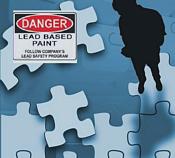 Looking for accurate information about the EPA RRP rule?
Looking for accurate information about the EPA RRP rule?  The following is a partial list of links you can use to find information, resources and instructions for working lead safe. This information can be used by renovators, landlords, tenants and homeowners. I suggest checking them out. I found many good work practices, ideas and options to consider that were not offered or discussed in the required Certified Renovator Training class. Renovators may also find some of the documents valuable to share with prospects and clients when discussing pre-1978 renovations and or if the prospect is considering doing all or part of the work themselves.
The following is a partial list of links you can use to find information, resources and instructions for working lead safe. This information can be used by renovators, landlords, tenants and homeowners. I suggest checking them out. I found many good work practices, ideas and options to consider that were not offered or discussed in the required Certified Renovator Training class. Renovators may also find some of the documents valuable to share with prospects and clients when discussing pre-1978 renovations and or if the prospect is considering doing all or part of the work themselves. Links to Information,Resources and Instructions About Working Lead-Safe
Links to Information,Resources and Instructions About Working Lead-Safe
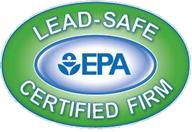
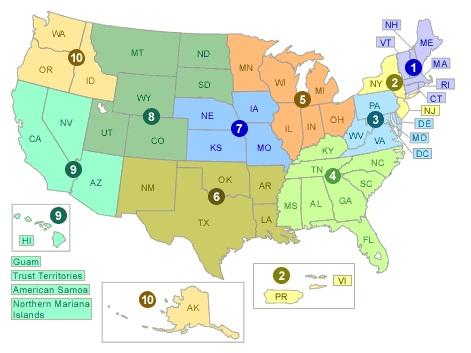 The information on and the format of each page varies. Some of the information found on the various pages may include:
The information on and the format of each page varies. Some of the information found on the various pages may include:


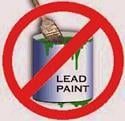 So it appears that a non-certified firm can do the work if testing that proved no lead was found was done by someone else, as long as the determination was made by a certified lead inspector or risk assessor, or by a certified renovator using an EPA recognized test kit and following the kit manufacturer’s instructions. The key is however, that the non-certified firm must have written proof from the person or business that did the testing that there is no lead in the work areas to be disturbed.
So it appears that a non-certified firm can do the work if testing that proved no lead was found was done by someone else, as long as the determination was made by a certified lead inspector or risk assessor, or by a certified renovator using an EPA recognized test kit and following the kit manufacturer’s instructions. The key is however, that the non-certified firm must have written proof from the person or business that did the testing that there is no lead in the work areas to be disturbed. Property owners who renovate, repair, or prepare surfaces for painting in pre-1978 rental housing or space rented by child-care facilities must, before beginning work, provide tenants with a copy of EPA's lead hazard information pamphlet
Property owners who renovate, repair, or prepare surfaces for painting in pre-1978 rental housing or space rented by child-care facilities must, before beginning work, provide tenants with a copy of EPA's lead hazard information pamphlet  Beginning April 22, 2010, property owners who perform these projects in pre-1978 rental housing or space rented by child-care facilities
Beginning April 22, 2010, property owners who perform these projects in pre-1978 rental housing or space rented by child-care facilities  While deleading activities conducted in residences and child-occupied facilities often involve work methods similar to those typically used in renovation, repair or painting (RRP) activities, such as replacing windows, painting and installing vinyl siding, the two types of activities are distinct from each other in terms of purpose and effect.
While deleading activities conducted in residences and child-occupied facilities often involve work methods similar to those typically used in renovation, repair or painting (RRP) activities, such as replacing windows, painting and installing vinyl siding, the two types of activities are distinct from each other in terms of purpose and effect.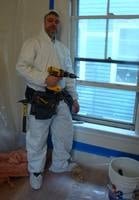 Once you have made the initial determination regarding whether your project is a renovation project or a deleading project, the next question is how to choose a contractor who is licensed and qualified to perform the work. Click on the following link to view a helpful guide on choosing a deleading contractor, “
Once you have made the initial determination regarding whether your project is a renovation project or a deleading project, the next question is how to choose a contractor who is licensed and qualified to perform the work. Click on the following link to view a helpful guide on choosing a deleading contractor, “ Being a landlord brings with it many legal responsibilities related to lead paint that, if not followed, can certainly eat away at any potential profits. There are many rules to consider and be aware of, the most common being the
Being a landlord brings with it many legal responsibilities related to lead paint that, if not followed, can certainly eat away at any potential profits. There are many rules to consider and be aware of, the most common being the  When work is done inside their units, tenants must be given an EPA published pamphlet titled “Renovate Right”. The pamphlet explains the dangers of lead and what is required to protect their and their family’s health and safety when work is being done at the property where they live. If work is to be done in common areas, the pamphlet can either be given to tenants, or, notices can be posted telling tenants how they can receive the pamphlet at no cost to them. Tenants must also be given or made aware how they can request a document titled the
When work is done inside their units, tenants must be given an EPA published pamphlet titled “Renovate Right”. The pamphlet explains the dangers of lead and what is required to protect their and their family’s health and safety when work is being done at the property where they live. If work is to be done in common areas, the pamphlet can either be given to tenants, or, notices can be posted telling tenants how they can receive the pamphlet at no cost to them. Tenants must also be given or made aware how they can request a document titled the  If the landlord does his own work on the rental property and or uses his/her own employees to do so, the landlord must also become an EPA Certified RRP firm and only use trained and certified workers to do the work. If you are a landlord doing your own work,
If the landlord does his own work on the rental property and or uses his/her own employees to do so, the landlord must also become an EPA Certified RRP firm and only use trained and certified workers to do the work. If you are a landlord doing your own work,  NOTE: If you are a landlord, realtor or member of a group representing landlords or realtors seeking help and information about the RRP rules, feel free to
NOTE: If you are a landlord, realtor or member of a group representing landlords or realtors seeking help and information about the RRP rules, feel free to  One of the differences between the EPA RRP Rule and the Massachusetts RRP Rule is that Massachusetts requires the Licensed Lead-Safe Renovation Contractor (firm) to maintain a sign in/out log, just like the one required for deleading contractors, for workers who enter and exit the contained work area during RRP renovations.
One of the differences between the EPA RRP Rule and the Massachusetts RRP Rule is that Massachusetts requires the Licensed Lead-Safe Renovation Contractor (firm) to maintain a sign in/out log, just like the one required for deleading contractors, for workers who enter and exit the contained work area during RRP renovations. 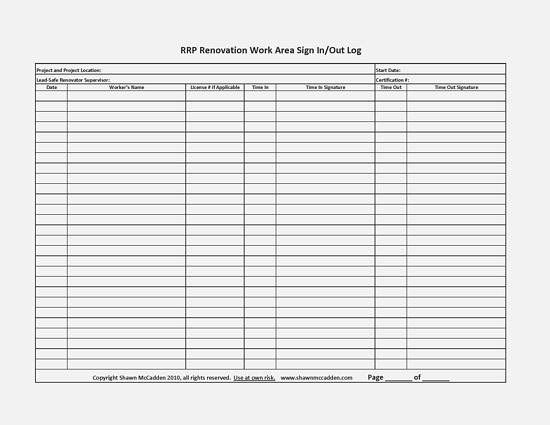
 Deleading under the MA Lead Law requires the removal or covering of
Deleading under the MA Lead Law requires the removal or covering of  At a recent
At a recent 



